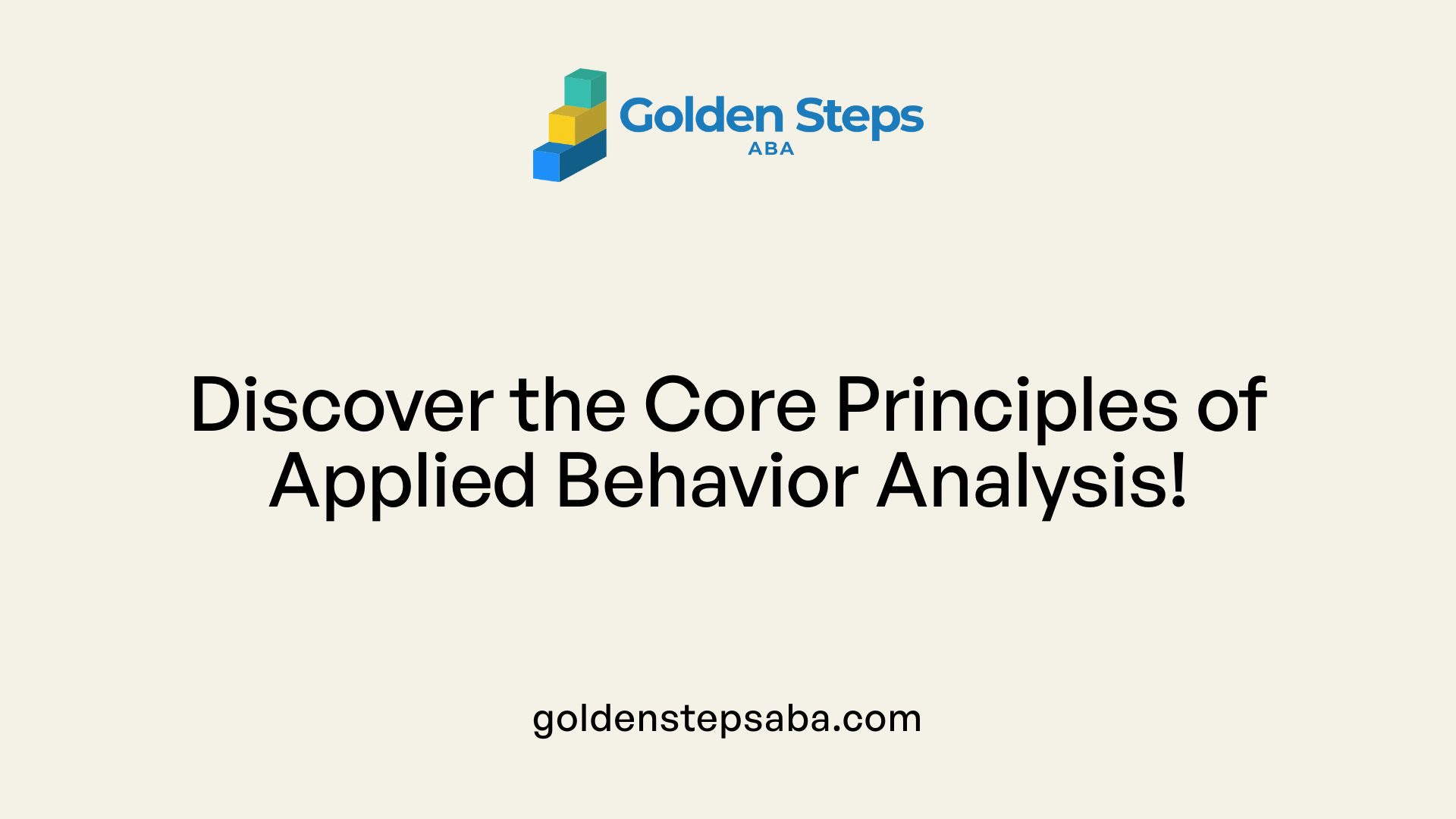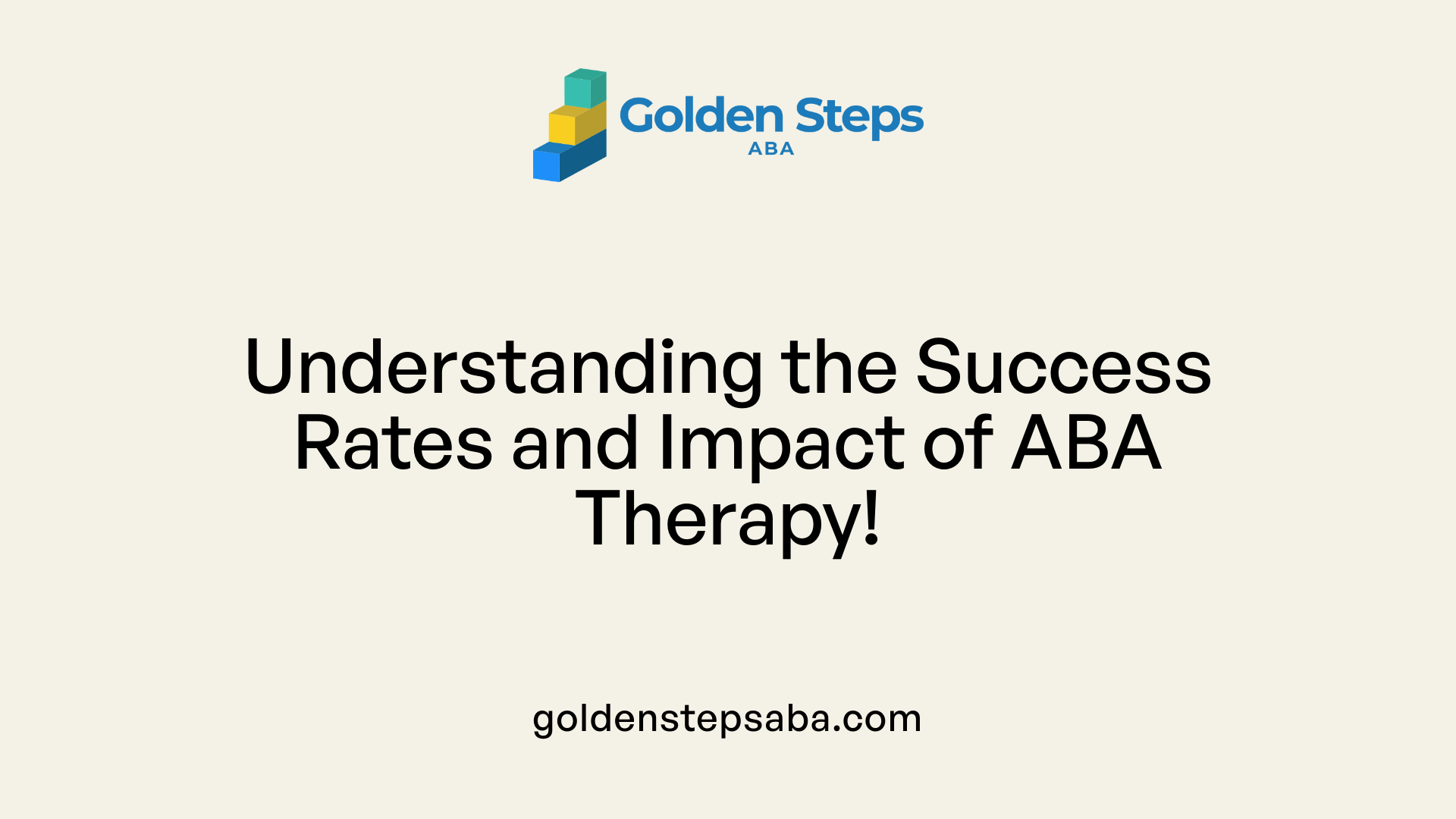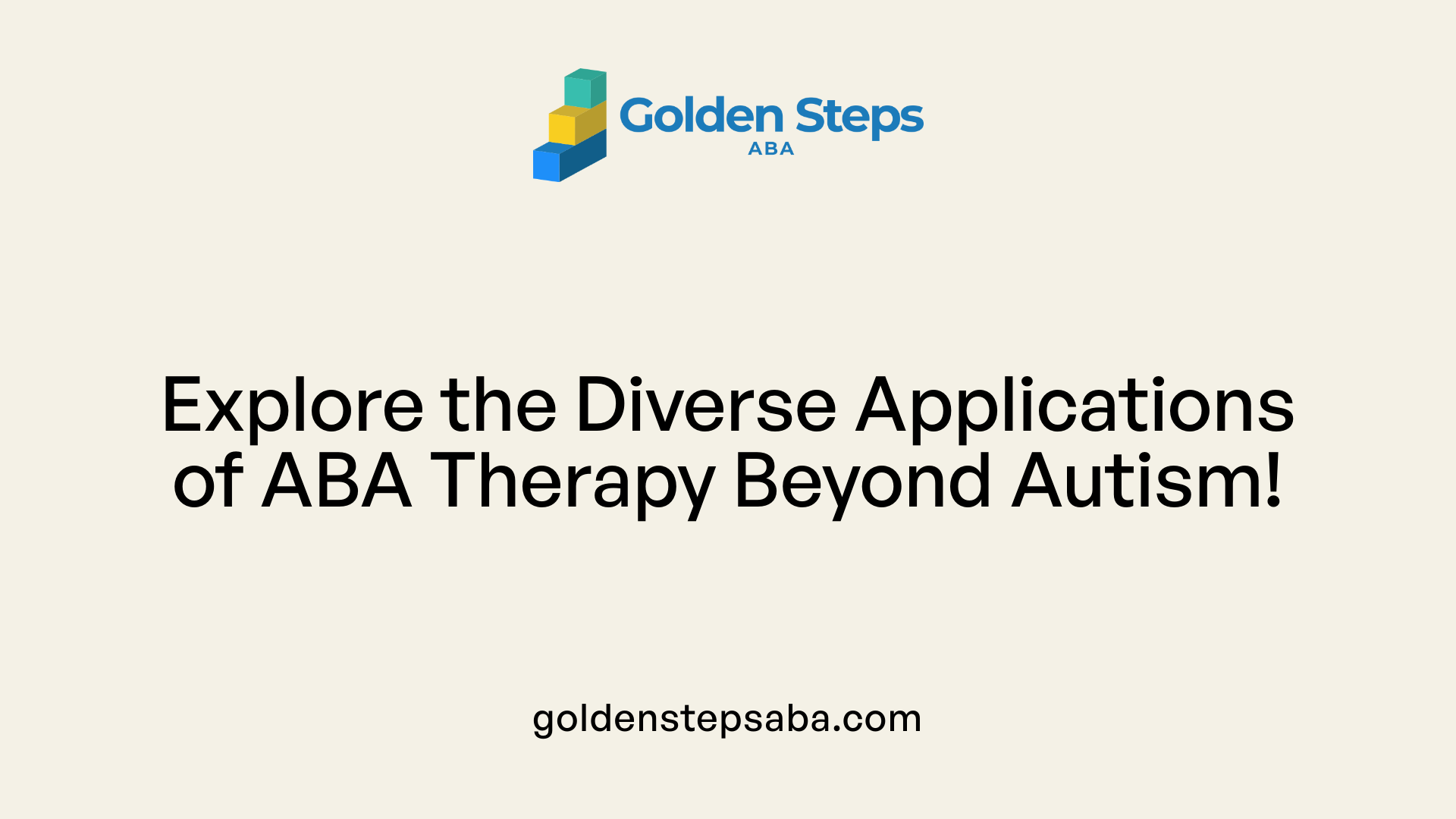Understanding ABA Therapy
Applied Behavior Analysis (ABA) therapy is a foundational approach in the support of individuals with Autism Spectrum Disorder (ASD). By employing scientifically-backed techniques, ABA focuses on improving social, communication, and learning skills, aiming to foster independence and enhance quality of life. Central to ABA is the customization of treatment plans that cater to the individual needs of each participant, often structured by qualified behavior analysts. This article delves into the principles, methodologies, and effectiveness of ABA therapy, addressing both its benefits and the concerns voiced by critics, as well as alternative therapy options for autism support.
The Principles of ABA Therapy

What are the primary principles of ABA therapy?
ABA therapy operates through seven key principles that guide its practices, ensuring effectiveness and relevance for individuals with autism.
- Applied: This principle emphasizes the selection of meaningful, socially significant goals that genuinely enhance an individual's quality of life.
- Behavioral: Behaviors targeted for change must be observable and measurable. This focus allows for the accurate assessment of progress over time through methodical data collection.
- Analytic: Interventions implemented are driven by evidence, supporting decision-making based on systematic evaluation of what works.
- Technological: This dimension calls for clear and replicable procedures in treatment, making the methods understandable and accessible for others.
- Conceptually Systematic: Therapies are grounded in established theories from behavior analysis, maintaining a consistent link between practice and underlying principles.
- Effective: Positive results should be a fundamental outcome of therapy efforts, leading to noticeable improvements in targeted behaviors.
- Generality: Skills learned should demonstrate their utility across different environments and situations, thus maximizing their relevance in everyday life.
How are behavioral science applications integrated into ABA?
Incorporating behavioral science, ABA utilizes a structured approach grounded in principles of behavior modification and reinforcement strategies. For instance, the ABC framework (Antecedent-Behavior-Consequence) is instrumental in analyzing and teaching behaviors, dissecting the dynamics of stimuli and responses to create effective learning environments.
What goals does ABA therapy aim to achieve?
The overarching goals of ABA therapy encompass increasing independence, improving communication and social skills, and reducing harmful behaviors such as self-injury. Programs are tailored to meet individual needs, focusing on enhancing daily living skills and supporting functional outcomes that contribute to a higher quality of life. By embedding these methodologies into everyday activities, ABA empowers individuals with autism to thrive.
| Principle | Description | Application Frequency |
|---|---|---|
| Applied | Focus on meaningful, quality-of-life improvements | Continuous |
| Behavioral | Target observable, measurable behaviors | Session-based |
| Analytic | Evidence-based interventions with systematic evaluations | Regularly |
| Technological | Clear, replicable procedures | Every session |
| Conceptually Systematic | Adherence to established behavior analysis theories | Ongoing |
| Effective | Achieving positive treatment outcomes | Throughout treatment |
| Generality | Skills applicable across various contexts | Post-therapy follow-up |
Effectiveness and Success Rates of ABA Therapy

What is the success rate of ABA therapy for autism?
The success rate of Applied Behavior Analysis (ABA) therapy for autism is notably high, reported at over 89%. This makes ABA the gold standard in autism treatment. Research indicates that children who engage in ABA therapy often show significant improvements in essential skills such as communication and socialization, while also experiencing a reduction in challenging behaviors.
How does ABA impact autism symptoms?
ABA is particularly effective during early intervention, especially when therapy begins before the age of four. It is estimated that approximately 64% of children with autism participate in ABA therapy. These early years are crucial; intensive therapeutic engagement can lead to more favorable outcomes in skill acquisition and overall behavior management. While ABA therapy can transform skillsets and reduce problematic behaviors, it’s important to highlight that autism is a spectrum disorder, and responses to the therapy can vary widely among individuals.
How does ABA compare with other therapies?
When compared to other therapeutic approaches, ABA stands out due to its structured, data-driven methods tailored to individual needs. While some parents may consider alternative strategies, ABA’s foundation in behavioral science provides consistent evidence of its effectiveness. ABA's versatility allows it to be integrated with other supportive therapies, enhancing overall developmental progress for children with autism and helping to build a more inclusive future.
Broader Applications of ABA Therapy

Can ABA therapy be used to treat conditions other than autism?
Yes, ABA therapy can be effectively utilized to treat conditions beyond autism spectrum disorder (ASD). Its principles are applicable to various behavioral and cognitive challenges faced by individuals of all ages. Here’s a closer look at some conditions where ABA can make an impact:
Attention Deficit Hyperactivity Disorder (ADHD)
ABA techniques help manage impulsivity and increase attention spans in children with ADHD, promoting better self-regulation skills.Obsessive-Compulsive Disorder (OCD)
ABA strategies can assist in reducing compulsive behaviors by using positive reinforcement to encourage alternative coping methods.Traumatic Brain Injuries
Individuals recovering from brain injuries can benefit from ABA's structured approach, helping them relearn daily living skills and social interactions.
Versatility of ABA techniques
The versatility of ABA techniques extends its reach well beyond autism treatment. For instance, ABA techniques are beneficial in enhancing communication and social skills in neurotypical children as well. This adaptability allows ABA to be tailored to meet individual needs across different contexts, demonstrating the therapy’s scientific backing and evidence-based effectiveness.
Additionally, many insurance policies recognize the broader applicability of ABA therapy, offering coverage for treatment even without an autism diagnosis. This highlights the importance and flexibility of ABA in addressing a wide range of developmental and behavioral issues.
| Condition/Behavior | ABA Technique Utilized | Outcome |
|---|---|---|
| Attention Deficit Hyperactivity Disorder | Behavior modification strategies | Improved attention and self-regulation |
| Obsessive-Compulsive Disorder | Positive reinforcement for alternative behaviors | Reduction of compulsive behaviors |
| Traumatic Brain Injury | Structured skill-retraining | Enhanced daily living skills and social interaction |
This table illustrates the broad applicability of ABA therapy in addressing various conditions, showcasing its significance in improving quality of life across diverse populations.
Common ABA Techniques

What are some examples of ABA therapy techniques?
Applied Behavior Analysis (ABA) deploys a variety of effective techniques designed to enhance learning and behavior in individuals with autism. One of the cornerstone methods is Discrete Trial Training (DTT), which breaks down tasks into smaller, manageable components, allowing gradual learning through repetition and reinforcement. This method is particularly beneficial in teaching new skills and behaviors.
Another crucial aspect of ABA is the Antecedent-Behavior-Consequence (ABC) model. This framework helps therapists analyze behaviors by identifying the triggers (antecedents), the behavior itself, and the outcomes (consequences) of those behaviors, thereby facilitating a structured approach to modify behaviors.
Positive reinforcement is widely utilized in ABA to encourage desired behaviors by rewarding individuals, often through systems like token economies, where children earn tokens or prizes for completing tasks successfully.
Additional methods include modeling, where therapists demonstrate appropriate actions for clients to emulate, and the Picture Exchange Communication System (PECS), which is particularly advantageous for nonverbal individuals as it allows them to communicate through visual aids.
Finally, Natural Environment Training (NET) integrates learning into familiar settings, enabling children to practice skills in their everyday environments. This approach is especially engaging and reinforces learning by applying skills to real-life scenarios.
In summary, these techniques reflect ABA's tailored and data-driven approach, designed to support each individual's unique learning style and needs. Through continuous assessment and adjustments, ABA can foster meaningful growth.
Duration and Intensity of ABA Therapy
How long do children with autism typically undergo ABA therapy?
The duration of ABA therapy for children with autism spectrum disorder (ASD) varies significantly based on individual needs and the severity of their symptoms. Typically, therapy may last from one to three years. For many children, especially those undergoing early intervention, intensive therapy is recommended, often requiring 25 to 40 hours per week. This high frequency is essential during the formative years when children are learning crucial social and communication skills.
The American Psychiatric Association categorizes ASD symptoms into three distinct levels of severity, which can directly influence the suggested duration and intensity of therapy. Children who require more comprehensive support may engage longer in ABA therapy before transitioning into less intensive services.
Graduation from ABA often occurs around the 4th or 5th grade. This transition typically depends on the achievement of specific goals within therapy rather than merely reaching a certain age. After graduation, children often benefit from ongoing support and check-ins to reinforce the skills they have learned during their therapeutic journey. Regular assessments can guide these check-ins, ensuring that the child continues to progress in different environments.
Criticism and Concerns Surrounding ABA Therapy
Is there any criticism or concern regarding ABA therapy?
Criticism surrounding Applied Behavior Analysis (ABA) therapy largely stems from its historical use of aversive techniques and the potential negative impacts on the emotional well-being of individuals with autism. Detractors argue that the therapy's rigid structure, which often emphasizes the elimination of certain behaviors, could unintentionally cause distress or emotional harm. They raise concerns that the focus on altering behaviors may imply that autistic traits are undesirable, leading to possible feelings of shame among individuals subjected to ABA.
Some former clients and advocates have described experiencing symptoms of post-traumatic stress disorder (PTSD) linked to negative reinforcement techniques used in some settings. There is also worry about forcing individuals to conform to neurotypical standards, potentially overlooking their unique perspectives and needs. Certain critics call for a shift towards more accommodating therapeutic models, such as person-centered therapies that prioritize fostering independence and respecting the individuality of autistic individuals.
The emotional impacts of therapy
The emotional repercussions of ABA therapy can vary widely, with some individuals thriving under its structure, while others report struggles with anxiety and self-identity. Many parents and caregivers recognize the importance of ensuring that their child’s therapy respects their feelings and retains a focus on building constructive skills rather than solely modifying behaviors. This awareness has fostered conversations about the balance between promoting positive behavior and ensuring emotional health.
Alternatives to ABA
For those concerned about the traditional ABA approach, alternatives such as developmental, relationship-based therapies offer different incentives. These therapies often prioritize emotional connections, individuality, and personal growth over compliance with normative behavior. Techniques such as Relationship Development Intervention (RDI) and Social Stories focus on enhancing emotional understanding and communication, ensuring that therapy complements rather than challenges an individual’s identity.
The ongoing debate highlights a need for greater awareness and flexibility in autism therapies to ensure they meet both behavioral and emotional needs comprehensively.
ABA Therapy and Parental Involvement
How important is parental involvement in ABA therapy?
Family involvement in ABA therapy is crucial. When parents engage actively in the therapeutic process, children often show greater improvements in skills and behaviors, enhancing the therapy's effectiveness. Parents play an essential role in setting treatment goals, reinforcing learning at home, and ensuring continuity across various environments. This continuity is vital for the generalization of skills, meaning what a child learns in therapy can be applied effectively in day-to-day life.
Programs that incorporate family training equip caregivers with strategies to support therapy outcomes. This guidance empowers families to implement strategies within their daily routines, increasing the likelihood that the child will practice and reinforce learned skills. Moreover, active parental involvement fosters a stronger connection between the child and their caregivers, resulting in a more supportive learning environment.
Benefits of family involvement
In addition to enhancing the child's engagement with skills, family involvement in ABA therapy has numerous benefits. It not only helps children become more independent but also builds confidence and facilitates better communication. Families become equipped to address challenges effectively, as they understand the underlying principles of the methods used in ABA.
By participating in the process, families initiate a collective movement towards improvement, inherently changing the approach to challenges associated with autism spectrum disorder (ASD). This collaborative effort ensures children receive consistent support, ultimately leading to more significant and meaningful advancements in their development.
The Role of Positive Reinforcement in ABA
How does positive reinforcement function within ABA therapy?
Positive reinforcement is a cornerstone strategy in ABA therapy, predominantly used to encourage the repetition of desired behaviors. This method entails providing a reward after the occurrence of a specific behavior, which significantly increases the likelihood of that behavior being repeated in the future. The rewards are individualized and meaningful to the child or adult, ultimately promoting participation and enjoyment in the learning process.
Among the techniques employed, token economies stand out, where children earn tokens for exhibiting positive behaviors, which can later be exchanged for tangible rewards or privileges. By emphasizing reward-based methods instead of punishment, ABA fosters a nurturing learning environment that is conducive to skill development and increased independence.
Impact on behavior development
The use of positive reinforcement in ABA therapy can positively impact behavior development in several ways. It helps in building a repertoire of useful skills, such as social interaction, communication, and self-care. As learners receive immediate and meaningful rewards, they are motivated to continue practicing these behaviors across different contexts.
Moreover, reinforcing desired behaviors strengthens the bond between the therapist and the participant, making therapy sessions more engaging and less repetitive. This promotes a positive experience, which can alleviate anxiety and enhance the overall effectiveness of the therapy. When children experience success through reinforcement, they develop a greater sense of autonomy and self-confidence, further fueling their learning and personal growth.
Initiating ABA Therapy and Program Structure
How do parents initiate ABA therapy for their child?
Initiating ABA therapy involves several important steps, beginning with an evaluation by a Board Certified Behavior Analyst (BCBA). During this assessment, the BCBA evaluates the child’s individual needs and sets specific goals tailored to those needs.
Parents typically start by seeking recommendations from health professionals or educational consultants to identify reputable ABA providers. Once a provider is selected, an individualized treatment plan (ITP) is created, outlining distinct objectives and intervention methodologies.
Continuous engagement with the treatment team is crucial. Parents are encouraged to provide feedback and collaborate with professionals to adjust strategies as needed. This partnership fosters a supportive environment for the child’s progress.
Additionally, families should explore funding options and insurance coverage early in the process to facilitate financial planning. Many private insurance plans and Medicaid cover medically necessary ABA services for children under 21, which can significantly impact accessibility to the therapy.
Program Planning and Professional Qualifications
Successful ABA programs require meticulous planning and ongoing assessment conducted by qualified professionals. The BCBA plays a pivotal role in customizing treatment goals based on the individual learner's abilities and needs. This ensures that the program is not a one-size-fits-all approach but is tailored to leverage each child's unique strengths, preferences, and requirements.
Moreover, family involvement is emphasized throughout the process. By participating in goal-setting and learning practices, families can reinforce therapy techniques at home, which enhances the overall effectiveness of ABA. Regular updates and data tracking also help to gauge progress and make real-time adjustments to the treatment plan.
Funding and Insurance for ABA Therapy

What should parents know about funding options for ABA therapy?
Coverage for ABA therapy is an essential consideration for many families accessing these specialized services. It typically varies by insurance provider, making it crucial for parents to review their specific policies. Many private insurance plans, alongside Medicaid, are required by law to offer coverage for medically necessary ABA treatments for children under 21. However, the extent and specifics of this coverage can differ significantly.
Parents should be aware of key aspects of their insurance contracts:
- Coverage Limits: Understand the maximum coverage amount allowed annually.
- Authorized Providers: Verify that their selected ABA therapists are within the insurance network to avoid high out-of-pocket costs.
- Documentation Requirements: Be prepared to supply necessary documentation, including treatment plans from certified behavior analysts.
Additionally, some states have enacted autism insurance reform laws, which can further shape the coverage landscape. It's beneficial to explore state-funded programs, grants, or community resources that may provide additional financial support for ABA therapy.
Parents are encouraged to engage in thorough discussions with their insurance representatives and healthcare providers to effectively navigate the funding landscape, ensuring they secure the necessary support for their child's therapy.
Making Informed Decisions
When considering ABA therapy for children with autism, it is crucial for families to gather comprehensive information and weigh the options carefully. While ABA offers structured methods backed by significant success in improving life skills and reducing maladaptive behaviors, it is important to consider the individual needs of each child and address any concerns about the therapy's methodology. Understanding the principles, techniques, and potential challenges associated with ABA allows parents and caregivers to make informed decisions. This ensures that chosen interventions align with their child's strengths and developmental goals, fostering an environment where children with autism can thrive.
References
- Applied Behavior Analysis (ABA) | Autism Speaks
- The Controversy Around ABA - Child Mind Institute
- ABA Services - Vista Autism Services
- ABA Therapy and Autism Development Programs
- Applied Behavior Analysis (ABA) for Children With Autism
- ABA Therapy and Autism Support Programs
- ABA Therapy for Autism Therapy Support Programs - Yellow Bus ABA
- Questions and answers about ABA | Autism Speaks
- ABA Early Intervention Program - Seattle Children's Hospital
- What is ABA therapy for autism? - Bluesprig Autism

